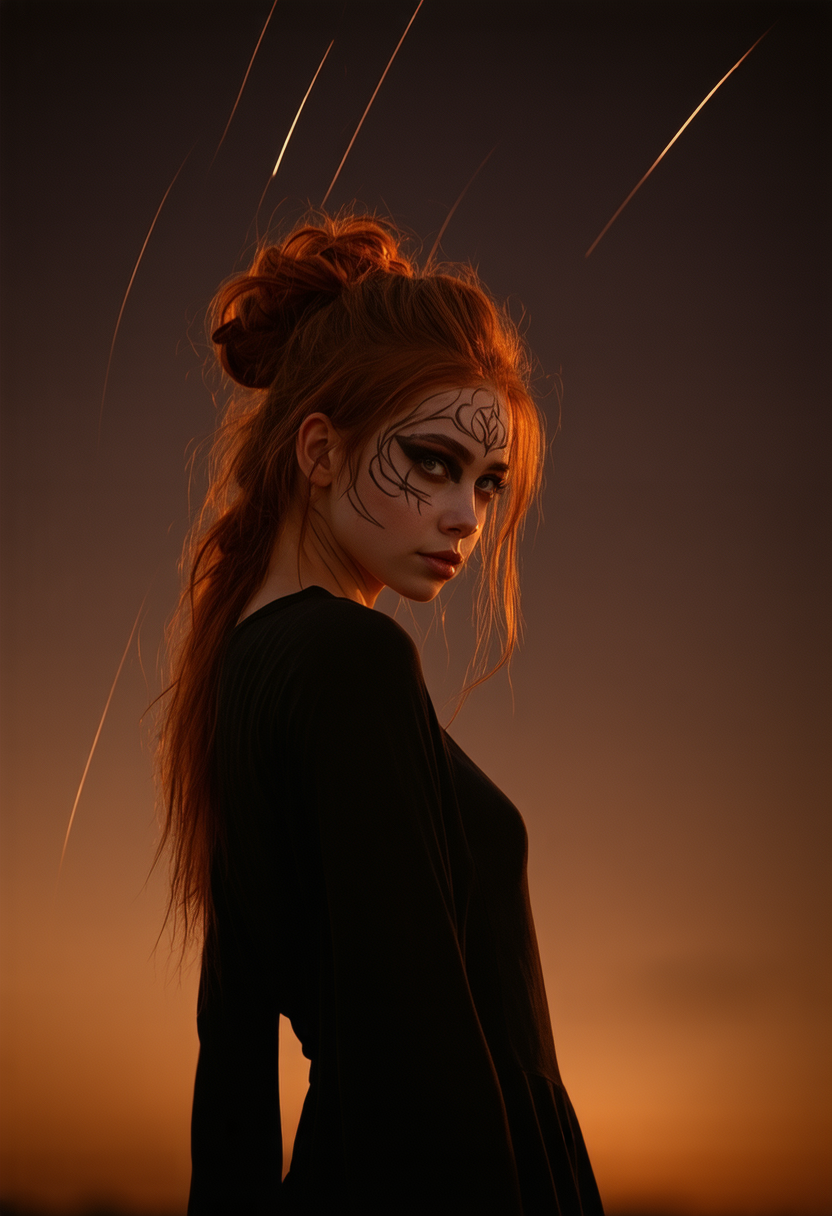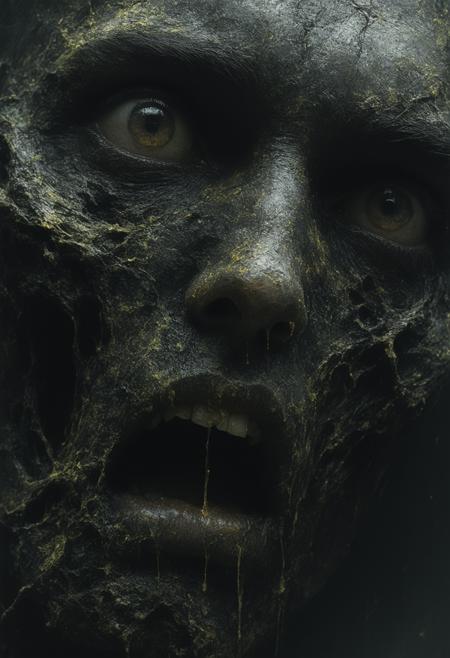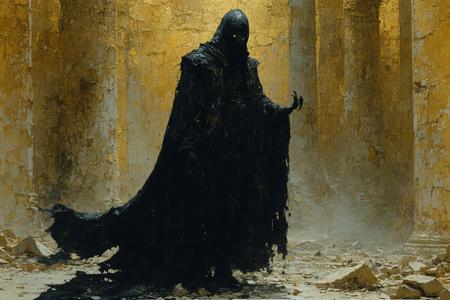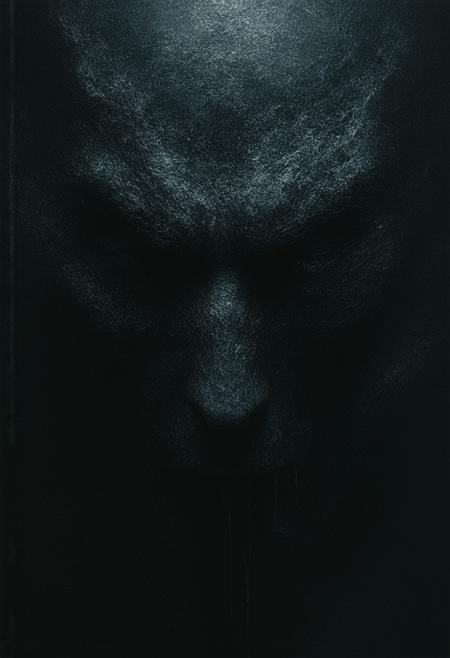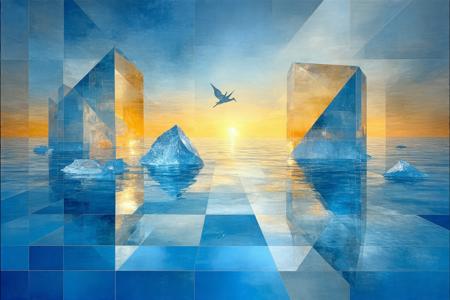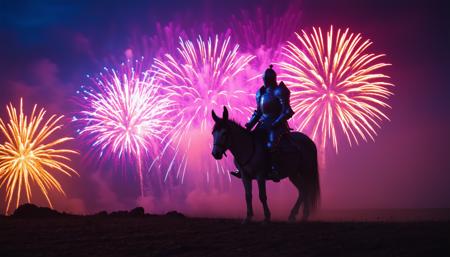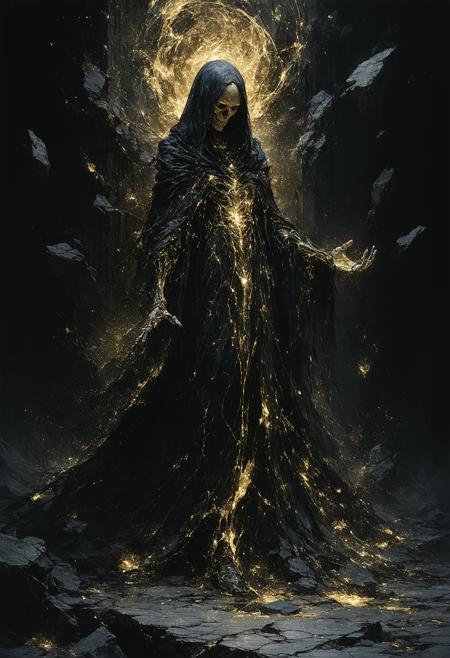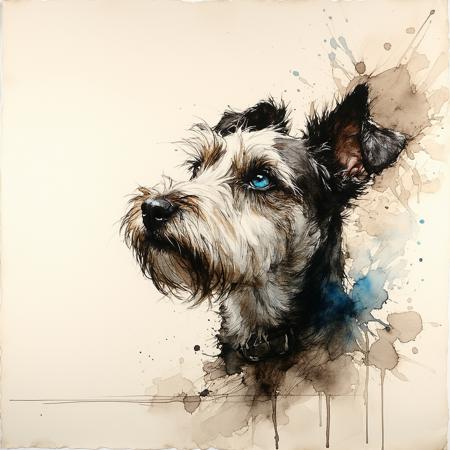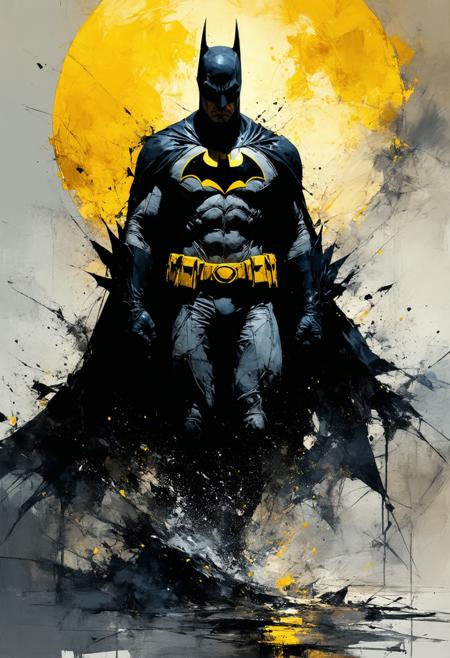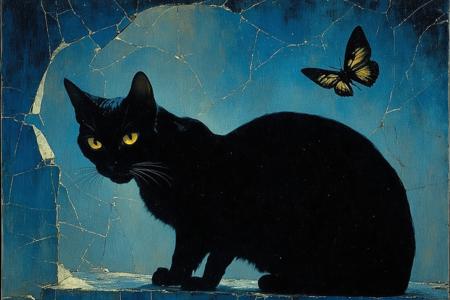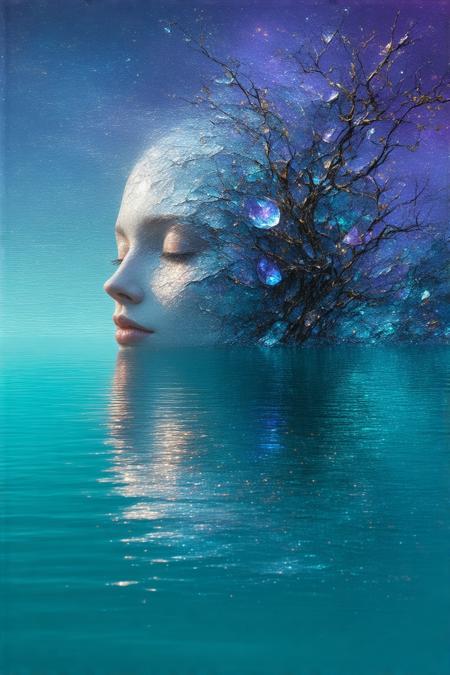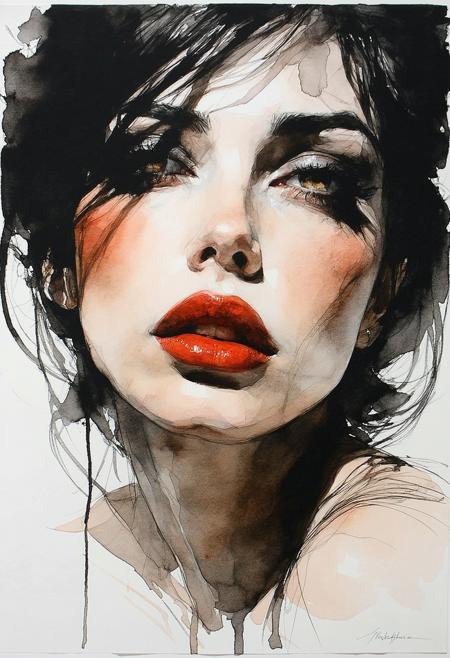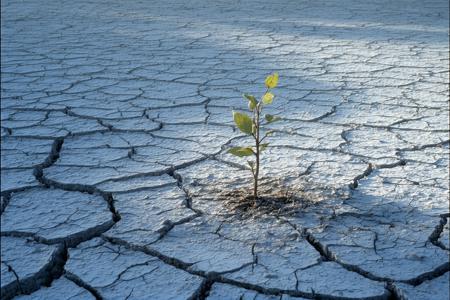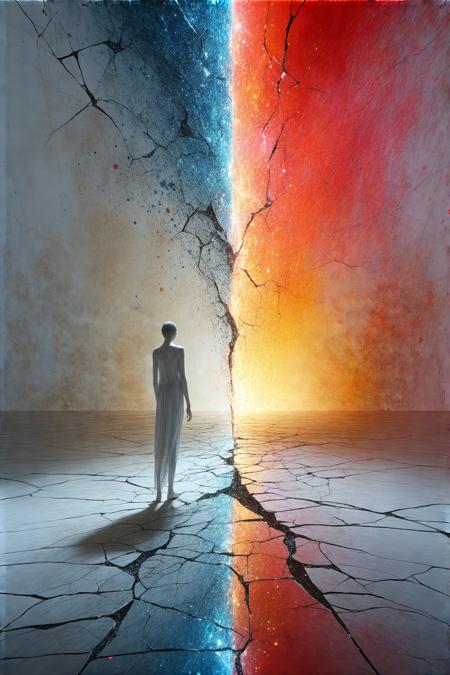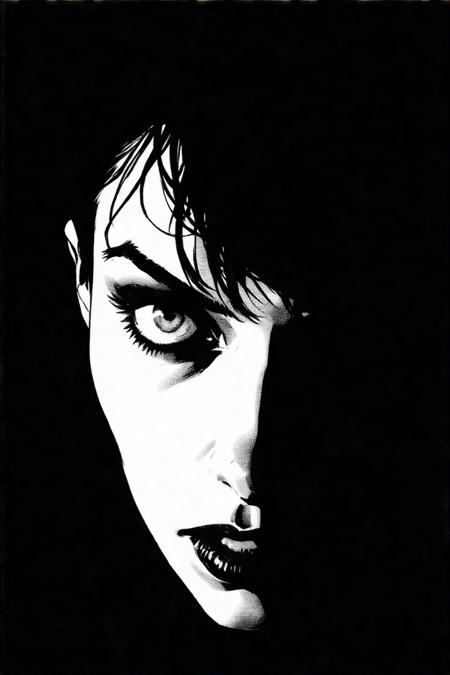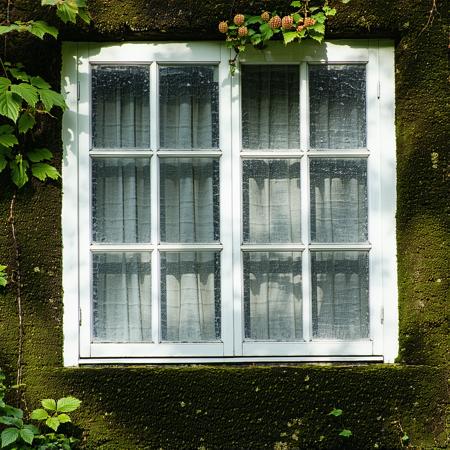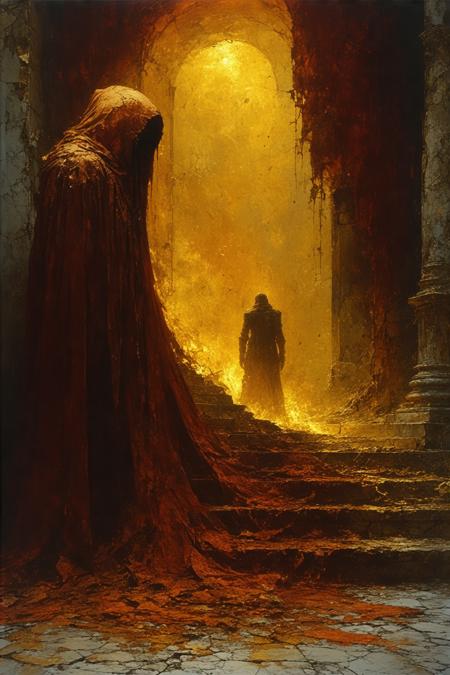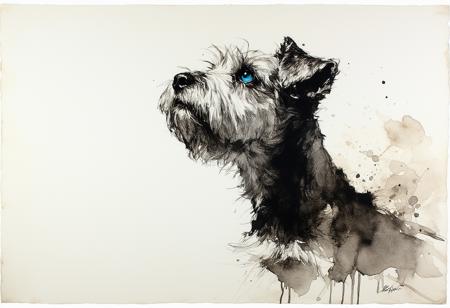In a haunting photograph that blurs the line between reality and concept art, a beefy Tunisian girl with cascading ginger hair styled in a low bun stands poised against a celestial backdrop of streaking meteors. Her strong, curvaceous form is accentuated by the warm, ethereal glow of the cosmic light show behind her. Intricate Halloween face paint adorns her features, transforming her visage into a mesmerizing blend of beauty and the macabre. The caring expression in her eyes contrasts with the eerie designs etched across her skin, creating an intriguing juxtaposition. The composition draws the viewer's gaze from her captivating face down to her powerful physique, then outward to the explosive trails of light crisscrossing the night sky. Shadows play dramatically across her form, emphasizing her muscular silhouette and the texture of her fiery hair. The overall mood is one of otherworldly allure and latent strength, with a touch of melancholy mystery. The scene evokes the style of Luis Royo's fantasy art merged with the dramatic lighting of Caravaggio, all captured through the lens of contemporary photographer Annie Leibovitz
